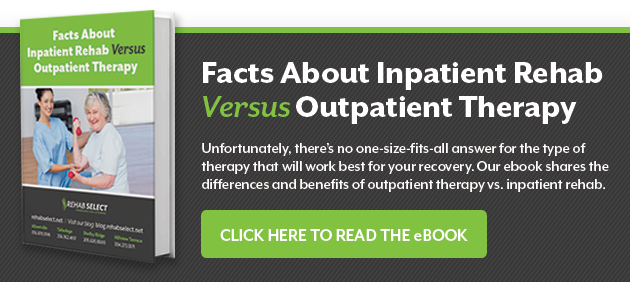
Hypertensive heart disease is the leading cause of death associated with high blood pressure. High blood pressure is a common condition in which the force of the blood pumping through the heart is elevated, causing the heart to work harder to pump blood out to the body. Risk factors for high blood pressure include genetics, obesity, older age, chronic kidney disease, stress, and dietary and lifestyle issues.
Causes and Symptoms of Hypertensive Heart Disease
However, in as many as 95% of cases, the underlying cause for high blood pressure cannot be identified; this is known as “essential hypertension.” High blood pressure can cause many serious heart conditions, including ischemic heart disease, ventricular hypertrophy, and eventually, congestive heart failure (CHF).
Congestive heart failure does not mean that the heart stops pumping; rather, it is a condition in which the heart has become less efficient at moving blood around the body. It is the leading cause of hospitalization in adults in the United States. In its early stages, CHF may not cause any noticeable symptoms. As the disease progresses, patients will begin to notice symptoms of increasing severity, which may include lung congestion, fluid retention in the limbs and/or abdomen, fatigue, muscle weakness, dizziness, and a rapid or irregular heartbeat.
Heart Failure and Hospital Readmissions
Congestive heart failure affects around 5 million Americans, with approximately 1 million patients needing hospitalization every year. Of these patients, a study published in the International Journal of General Medicine found that approximately 9.42% will be readmitted to the hospital within 30 days of discharge, although some studies put the number at closer to 25%.
Readmission was most common among patients aged over 65, patients with a history of drug abuse, and those suffering from other diseases, especially AIDS and renal failure. However, even allowing for these additional risk factors, many of the readmissions were considered by the researchers to be “preventable.” Given the high costs of readmissions, penalizations imposed on hospitals for excess readmissions rates, and the major negative impact on the patient’s quality of life, the study reported that reducing readmissions has become a “major priority for many hospitals and health centers.”
How to Reduce Hospital Readmission Rates for Heart Failure Patients
Reducing hospital readmission rates is a complex, multi-faceted process, requiring involvement from both pre- and post-discharge medical professionals, the patients’ carers, and the patients themselves. A holistic approach to reducing hospital readmission rates for people with hypertensive heart disease should include:
1. Avoiding Initial Hospitalization with Improved Clinical Care Paths
Research published in the American Journal of Emergency Medicine found that the introduction of a new clinical pathway for heart failure patients reduced admissions from the emergency department compared to controls. Patients in the study received an immediate consultation with a cardiologist when presenting to the emergency department. As a result of this consultation and expert treatment, many were able to avoid admission to hospital altogether.
2. Coordinated Care During Hospitalization
A systematic review of literature on readmission rates found that the single most beneficial strategy to reduce readmission rates was “coordinated care” - in other words, ensuring that all medical professionals involved in the patient’s care are aligned around a common treatment strategy, particularly as the patient transfers from one treatment facility to another. Researchers found that the patient-centered, cohesive approach to treatment was more successful at reducing readmissions than a “single physician” approach.
3. Self-Care Training Before Discharge
Ensuring that patients and their loved ones understand fully how to look after themselves and manage their heart disease at home is vital to keeping them out of the hospital. This process can start before the patient is discharged. For instance, CHF patients at North Mississippi Medical College were asked to attend a “self-care college” before they left hospital; since the program’s introduction in 2011, the 30-day readmission rate for CHF patients has dropped from 16.8% to 12.85%.
4. Engaging Patients in Their Treatment
Research published in the CHEST journal reported that involving heart failure patients in their own care and monitoring of their symptoms during hospitalization was “essential” to improving healthcare outcomes and reducing readmissions. Patients not only need information about their disease; they also need to be engaged in the process of managing their recovery. Techniques that may help patients absorb and integrate the management of their heart condition include goal setting and the “teach-back” method, in which the patient is asked to explain their treatment to a medical professional to check their understanding and identify any potential issues, concerns or barriers.
5. Post-Discharge Follow-Up Appointments
The American College of Cardiology led improvements to post-discharge care in heart failure patients with the introduction of the “See You in 7” initiative. High-risk patients were scheduled for a follow-up appointment within a week of discharge, working collaboratively with patients to identify and address any barriers to keeping those appointments; 30-day readmission rates for heart failure patients dropped by 2.6%.
6. Referral to Rehabilitation Programs
Once patients leave the hospital, they must learn to manage their heart disease themselves to avoid returning. Cardiac rehabilitation programs have been proven to be a highly effective way to promote better clinical outcomes in patients with congestive heart failure and other conditions caused by hypertension. For instance, researchers at Hokkaido University found that heart failure patients who received a physical rehab treatment program had a significantly lower rate of hospital readmission than the control group (16% versus 36%).
Cardiac rehabilitation is a customized, medically supervised regime of treatment to help patients with congestive heart failure and other heart conditions manage their cardiac symptoms and reduce risk factors. Typically, programs comprise supervised, progressive exercise regimes, coupled with training on medication management, diet and nutrition, stress management, and lifestyle coaching.
7. Patient Self-Care
Patients themselves can also play a key role in keeping themselves out of the hospital. The American Heart Association stresses that “although it can be difficult living with a chronic condition like heart failure, many people learn to manage the symptoms and enjoy full lives.” Lifestyle changes that will promote a healthier heart include:
- Quitting smoking
- Regaining and maintaining a healthy body weight
- Keeping up a regular, safe exercise regime
- Eating a healthy diet
- Keeping an eye on cholesterol and blood sugar
- Managing stress
If you would like to know more about the cardiac rehabilitation programs offered by Rehab Select, please visit our website, or click here to contact us.





